Last Chance to Catch NYC's Holiday Notalgia Train
We met the voices of the NYC subway on our nostalgia ride this weekend!


The highly anticipated opening of the new wing of the American Museum of Natural History is finally happening on May 4th! The opening of the Gilder Center, which broke ground in 2019, was originally set to open in February. We got a sneak peek back in October 2022. The 230,000-square-foot, $465 million addition designed by Studio Gang will connect multiple buildings of the historic museum campus and feature a variety of new exhibition and learning spaces designed by Ralph Appelbaum Associates. Check out the first photos from inside below!

The new wing is architecturally striking as soon as you see it from the exterior. The Columbus Avenue façade has an undulating design of three-dimensional Milford pink granite panels, the same stone used for the Museum’s entrance on Central Park West. The design connects the new wing visually to the historic buildings of the museum and also helps make the building more efficient. The stone cladding, deep-set windows, and tree-shading will help the building stay naturally cool in the summer. At night, the structure glows from within as the windows are filled with light.


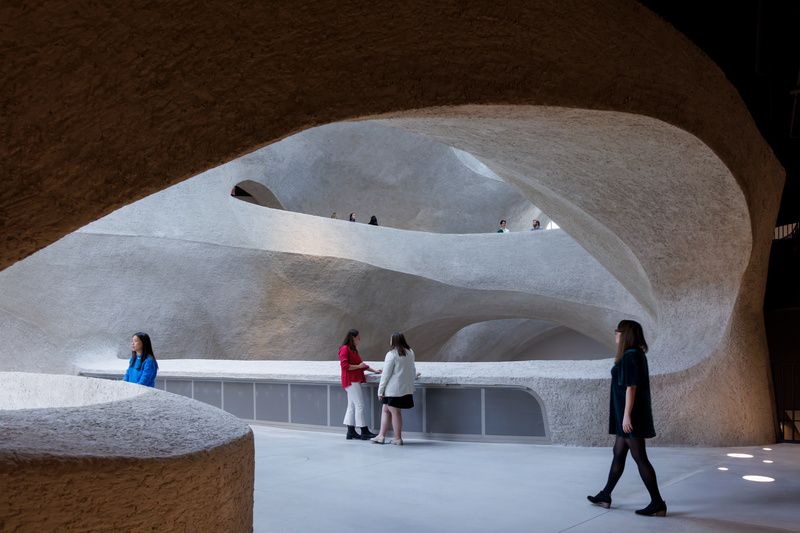
Stepping into the Gilder Center, guests will first encounter the soaring, four-story Kenneth C. Griffin Exploration Atrium. This canyon-like space presents visitors with multiple levels of new exhibition galleries, education spaces, and collections facilities. The new wing contains includes six floors above ground, four of which are open to the public, and one below. This atrium serves as a gateway to the rest of the museum, creating approximately thirty connections among ten existing buildings, as well as the entryway to all of the new spaces that will open in the wing.

At the core of the new wing’s learning facilities will be The David S. and Ruth L. Gottesman Research Library and Learning Center. This educational hub will open up the Museum Library’s unparalleled resources to researchers, scholars, and visitors. The Learning Center will feature a reading room, exhibition alcove, group study room, and space for organized programming or collection displays.
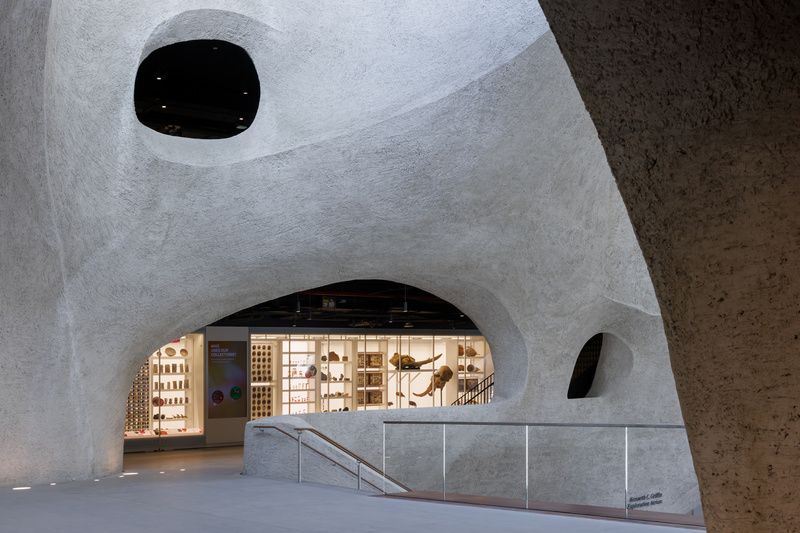

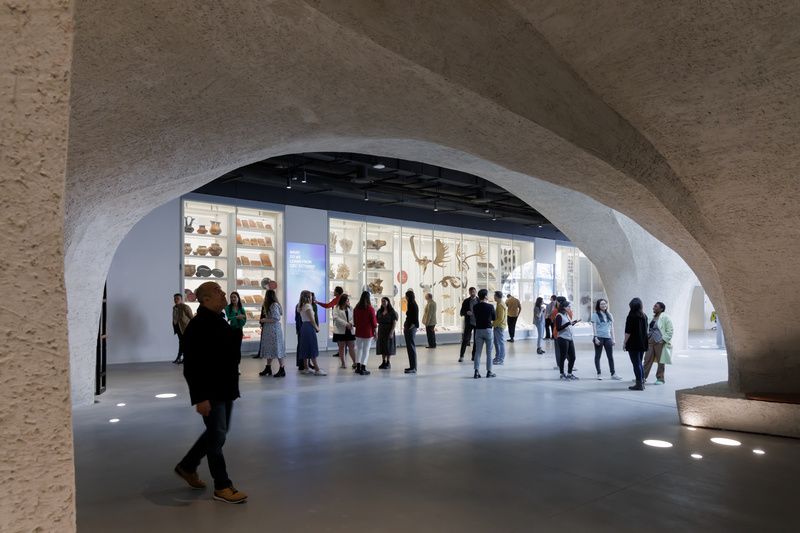
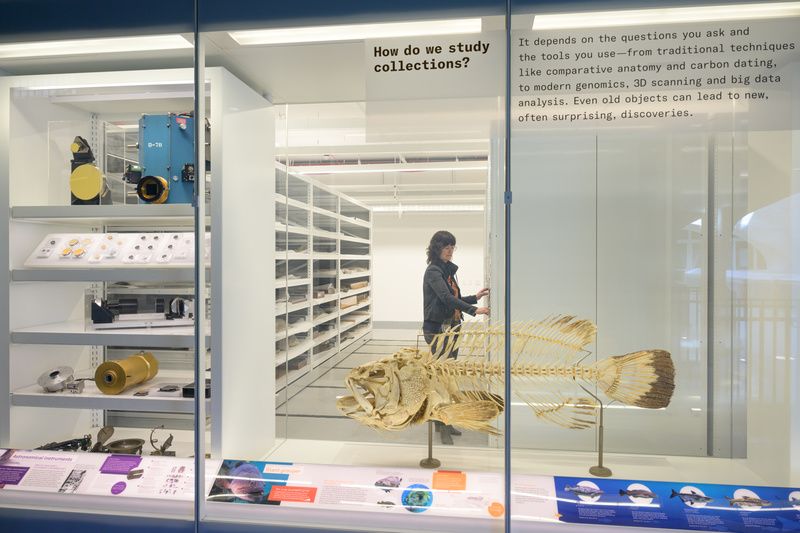
Another important feature of the new wing will be the five-story Louis V. Gerstner, Jr. Collections Core, a five-level facility with three floors of floor-to-ceiling exhibits located on the south side of the atrium. MOre than 3,000 items will be on display in the exhibits, “representing every area of the Museum’s collections in vertebrate and invertebrate biology, paleontology, geology, anthropology, and archaeology, from fossil tracks to trilobites and antlers to pottery.” Visitors will get a literal inside look at how scientists analyze various collections through glass panels that will allow them to see into working collections areas. The Gilder Center will house close to four million scientific specimens, roughly 12% of the Museum’s collection.
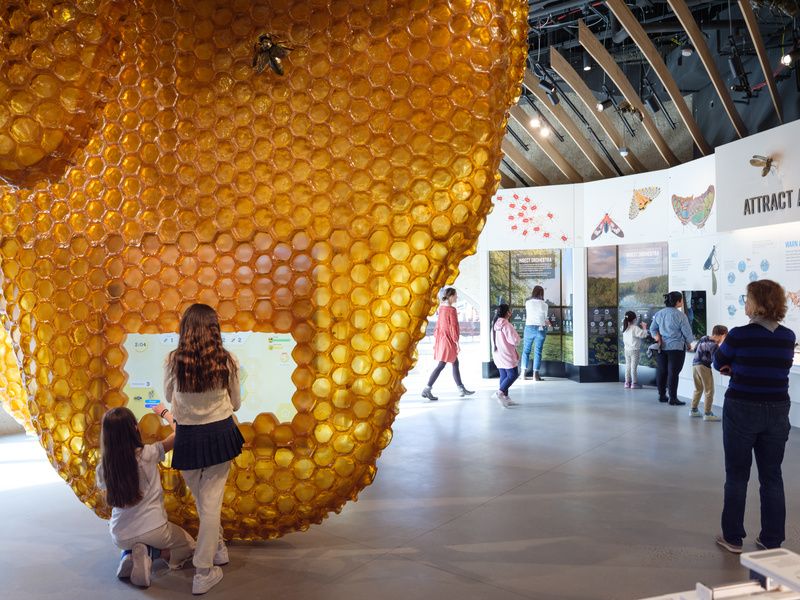
On the north side of the atrium, visitors will find the Susan and Peter J. Solomon Family Insectarium, the first Museum gallery dedicated to insects to open in fifty years. This 5,000-square-foot exhibition will feature live and pinned insects and graphic and digital exhibits. Visitors will step into the ecosystems of insects as they enter a monumental 8,000-pound resin model beehive and “pass under a transparent sky bridge built as a route for live leafcutter ants in one of the world’s largest leafcutter ant displays.” The bugs of New York get special attention in touch screen displays and a sound gallery featuring the music of Central Park’s insects. Above the Insectarium is the Davis Family Butterfly Vivarium where guests can mingle with 1,000 free-flying butterflies from 80 species.
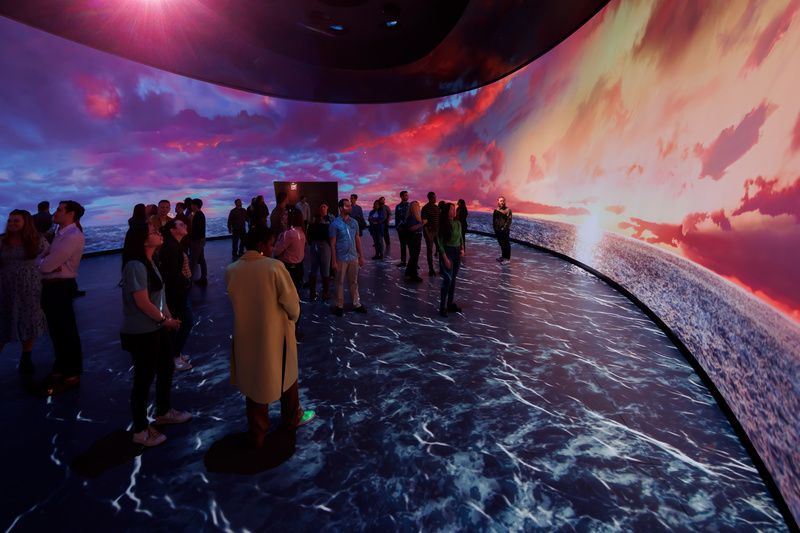
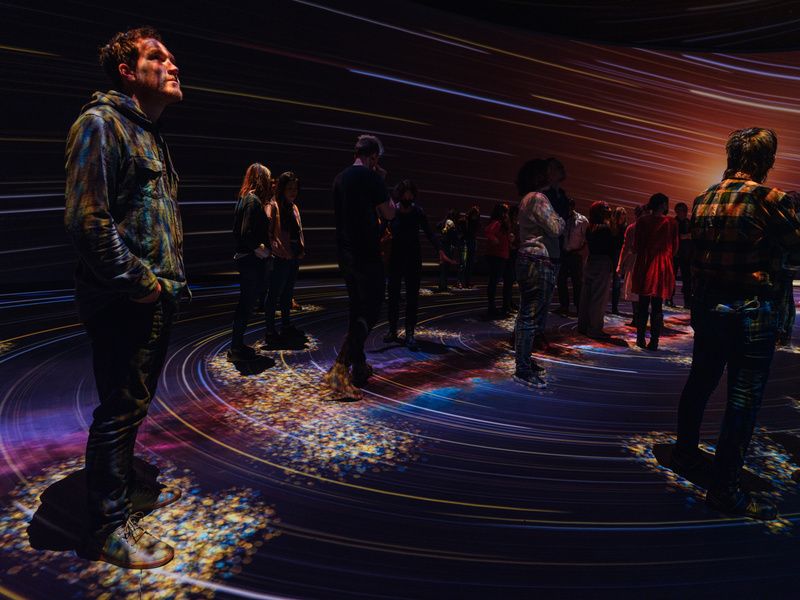
Perhaps the most technologically advanced new space in the Gilder Center is Invisible Worlds, a 360-degree immersive science-and-art experience that “offers a breathtakingly beautiful and imaginative yet scientifically rigorous window into the networks of life at all scales.” Designers of the Berlin-based Tamschick Media+Space with the Seville-based Boris Micka Associates worked closely with data visualization specialists and scientists from the Museum and around the world to bring this display to life. After passing through an introductory gallery, guests enter a space the size of a hockey rink that is fitted with mirrors on the ceiling to suggest an infinite space. Soon they are enveloped in a looping twelve-minute immersive experience that shows how all life on Earth is connected. The show is interactive, as well as immersive, as your own movements can affect the images on screen.
The Richard Gilder Center for Science, Education, and Innovation will open to the public on May 4th, 2023!
Next, check out Top 12 Secrets of the Museum of Natural History
Subscribe to our newsletter